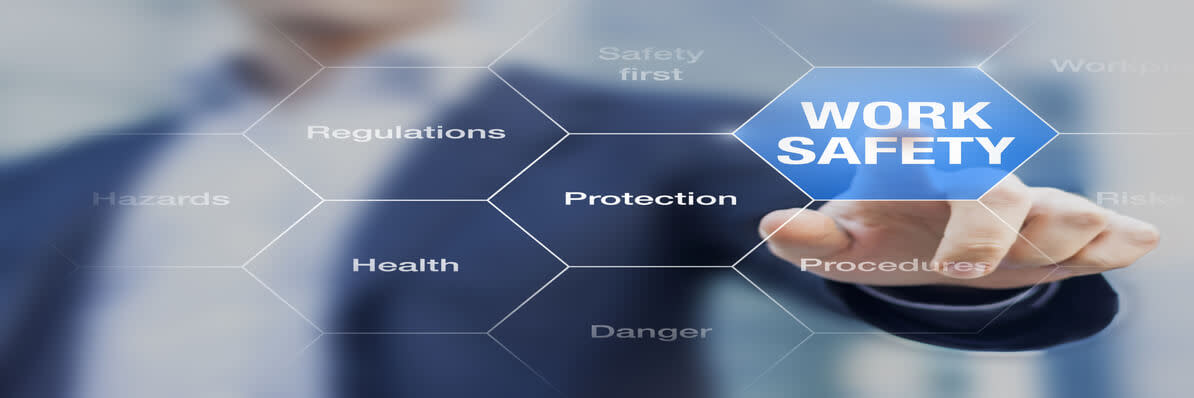Your health and safety checklist
In order to be able to put together a competent health and safety checklist, you need to know where to start. Understanding the sorts of things that result in injury and ill health can help you recognise what steps you need to take to avoid anyone coming to harm.
If you start by concentrating on these areas, rather than feeling overwhelmed, you can start to work on practical steps to control your work environment:
Walk around your premises, including the office and yard, noting what might cause harm
Look at all the vehicles and people moving round your workplace, marking any traffic and pedestrian movements so that you can see possible interactions, with the intention to reduce these moments
Remember to include less frequent tasks, e.g. waste skip changes
Make sure you consider delivery drivers as they are particularly vulnerable
Talk and listen to your members of staff so you can learn from their knowledge experience and opinions about health and safety. There are legal duties to consult employees or their representatives. Many employers have found that involving employees in this way - to eliminate or control risks has been invaluable.
Look at the accident book to learn what previously created incidents or near misses
What to do:
After assessing areas in your business and location that need addressing, you should plan and provide measures to ensure you take health and safety into consideration:
Safe site
Arrange your workplace so that pedestrians are safe from vehicles, with separate routes for both and a one-way system, if you can. Try to use ‘Highway Code’ signs to indicate vehicle routes, speed limits etc. and provide appropriate crossing points where pedestrians and traffic meet
Avoid reversing where possible, or provide reversing aids such as CCTV where appropriate
Make sure the lighting is adequate where people and vehicles are working and that road surfaces are firm and even, with safe areas for loading and unloading
Try to provide separate car parking for visitors, as they may not know your site
Do vehicle routes have sharp or blind bends/corners? Are they wide enough and properly maintained? Who plans all this? Who checks all this?
Safe vehicle
Ensure vehicles are suitable and fit for the purpose they are being used for. This includes making sure that your vehicles in good repair, particularly the braking system, steering, tyres, lights, mirrors and specific safety systems
Remove the need for people to climb up on vehicles where possible, e.g. by providing gauges and controls that are accessible from ground level. If this is impractical, reduce the risk of falling when people have to climb on to a vehicle or trailer by providing well-constructed ladders, non-slip walkways and guard rails where possible
Fit rollover protective structures and use seat belts where fitted
Do all vehicles and trailers have effective service and parking brakes and are there clear instructions on how and when to apply them? Have you considered alarms that sound if the handbrake isn’t engaged? Vehicles rolling because the handbrake is left off when parked kills several drivers each year
Are stabilisers always used when operating lorry-mounted cranes?
Are tipping vehicle bodies always propped when people work under them or under tilting cabs?
Safe driver
Train lift truck operators, and reassess lift truck operators at regular intervals, e.g. every three to five years, or when new risks arise such as changes to working practices
Train drivers of other vehicles to a similar standard making sure all drivers are supervised (including those visiting the site)
Do drivers always use trailer parking brakes and not rely on disconnecting the red line?
You can prevent many accidents by examining each aspect of your business and removing or controlling hazards as far as possible. You can take the necessary managerial and supervisory steps to make sure what is supposed to happen, does happen. This means you need to look at what people do at work as well as how.
Implementing your checklist
Find someone who is actually going to do this work. They don’t need to be a legal or health and safety specialist; they just need to have an appreciation of what happens, as well as what hazards and risks you need to focus on in your business. Information on the level of practical control needed is also important.
Once you know who is going to do the work, rank any problems in priority order for action, depending on the likely chance of something happening and how serious it would be.
An authoritative figure should be responsible for the plan, checking that it is taken forward. They should also check that any precautions or procedures actually work and are used.
More information
Information is available from the Health and Safety Executive (HSE) that covers vehicle and road haulage health and safety checklists (including an example of a road haulage health and safety checklist). You can also find information in the Freight Transport Association Yearbook and the Road Haulage Association Handbook, which contains useful summaries of legal requirements and practical advice. There are also trade unions produce drivers’ handbooks that are also helpful.
